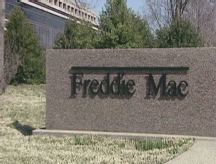What the 'problem bank' list doesn't say
More banks are in trouble nowadays, but some experts wonder just how accurate a picture the FDIC's list paints of the industry.
NEW YORK (CNNMoney.com) -- The government's latest assessment of the nation's financial system showed that many more small banks are in trouble. But what the report didn't say may speak volumes.
On Tuesday, the Federal Deposit Insurance Corp. revealed that the number of institutions on its so-called "problem bank" list jumped to 117 during the second quarter, up from 90 just three months earlier.
That list has gained greater attention lately as many banks continue to suffer losses stemming from the deteriorating housing market and slowdown in the broader economy. Nine banks have failed so far this year, including IndyMac, a California-based mortgage lender with assets of $32 billion at the time of its collapse.
But experts contend that the list is a lagging indicator and, as a result, may not provide an accurate picture of the current health of U.S. banking industry.
Typically, the list is published some 8 weeks after all of the nation's banks have reported their latest quarterly results.
What's more, notes Mark J. Flannery, a professor of finance at the University of Florida's Warrington College of Business Administration, regulators base their decision on what banks tell them.
And since current accounting standards give banks some discretion about when they recognize bad news, they may want to put it off as long as possible.
Exactly how bank regulators determine which institution is worthy for the "problem list" remains a process shrouded in secrecy.
But what is known is that the health of a bank tends to be based on several factors including the amount of capital an institution has on hand to protect against losses, the quality of its assets, its management, and its earnings, liquidity and sensitivity to market risk.
Bank regulators - which in addition to the FDIC include the Office of the Comptroller of the Currency (OCC) and Office of Thrift Supervision (OTS) - then give the banks a report card, assigning a composite rating based on the bank's performance in each category. Those that receive a rating of 4 or 5 are put on the list.
Since the failure of IndyMac in mid-July, however, speculation has emerged that regulators may have exercised some discretion about which institutions they put on the confidential list.
The FDIC's first-quarter problem list, released at the end of May, clearly did not have IndyMac on it. That's because the FDIC reported that the 90 banks on the list had a combined $26.3 billion in assets - less than the size of IndyMac. That suggested that the only problem banks at the time were smaller community banks.
Experts say that if IndyMac had been on the list, the total asset size of troubled banks would have been much higher. That might have prompted a witch hunt of sorts, with the market looking for which bank was in trouble and possibly causing a run on that institution.
"It is kind of the issue of the snake swallowing the watermelon," said Bert Ely, an Alexandria, Va.-based banking industry consultant of Ely & Co. "I can assure you if IndyMac had been on the list in late May, there would have been an immediate hunt."
Others pointed out that bank failures, as a rule, don't happen to be overnight phenomena.
Tim Yeager, a professor of finance at the University of Arkansas' Walton College of Business who previously worked for the Federal Reserve Bank of St. Louis, said regulators probably knew about the state of IndyMac for some time even though it wasn't on the first-quarter problem list.
"It is telling that IndyMac was not on the problem list the quarter before," said Yeager. "Usually bank failures like that are pretty slow events - it is unlikely [federal regulators] were surprised by that."
The OTS, IndyMac's primary regulator, has maintained that it was aware of the company's problems, but was in the midst of an examination of the lender that did not wrap up until after the first quarter was over. At that point, IndyMac was placed on the list.
Those who keep a close eye on the nation's banking industry argue that the nearly 30-year-old bank monitoring system, commonly referred to as CAMELS (which stands for Capital adequacy, Asset quality, Management, Earnings, Liquidity and Sensitivity to market risk) remains quite effective at gauging a bank's health.
In recent years, there have been calls for regulators to take into greater account the wisdom of the market, most notably a bank's stock price or the yield a company's debt is trading at.
As innovative a solution that may be, the lion's share of the nation's banks are not publicly traded. What's more, those indicators aren't always reliable, note experts such as Flannery.
Stock prices, for example, can be affected by broader gyrations in the market and may not accurately predict if a bank will go bust or is even on the verge of failure.
"I think there are times when the CAMELS system is more informative and times when the market price is more informative," said Flannery. "There is no general rule."
If regulators are at a disadvantage, it is determining just how many banks could fail as a result of the current credit crisis.
While regulators are working hard to stay ahead of the problems faced by banks, their forecasting models have not endured a credit or mortgage crisis of this magnitude before and, as a result, have no way of telling how deep the impact will be.
"You can look at this and say they are missing the problems, but this business cycle is different from others," said Yeager. "You need to go through this to be able to update the model - it is really a Catch-22." ![]()




